HK Express Welcomes Its 10th A321neo Aircraft
Progressing towards fleet expansion to 40 Aircraft by Year-End, with weekly flights set to exceed 800
Hong Kong, 11 Nov, 2024
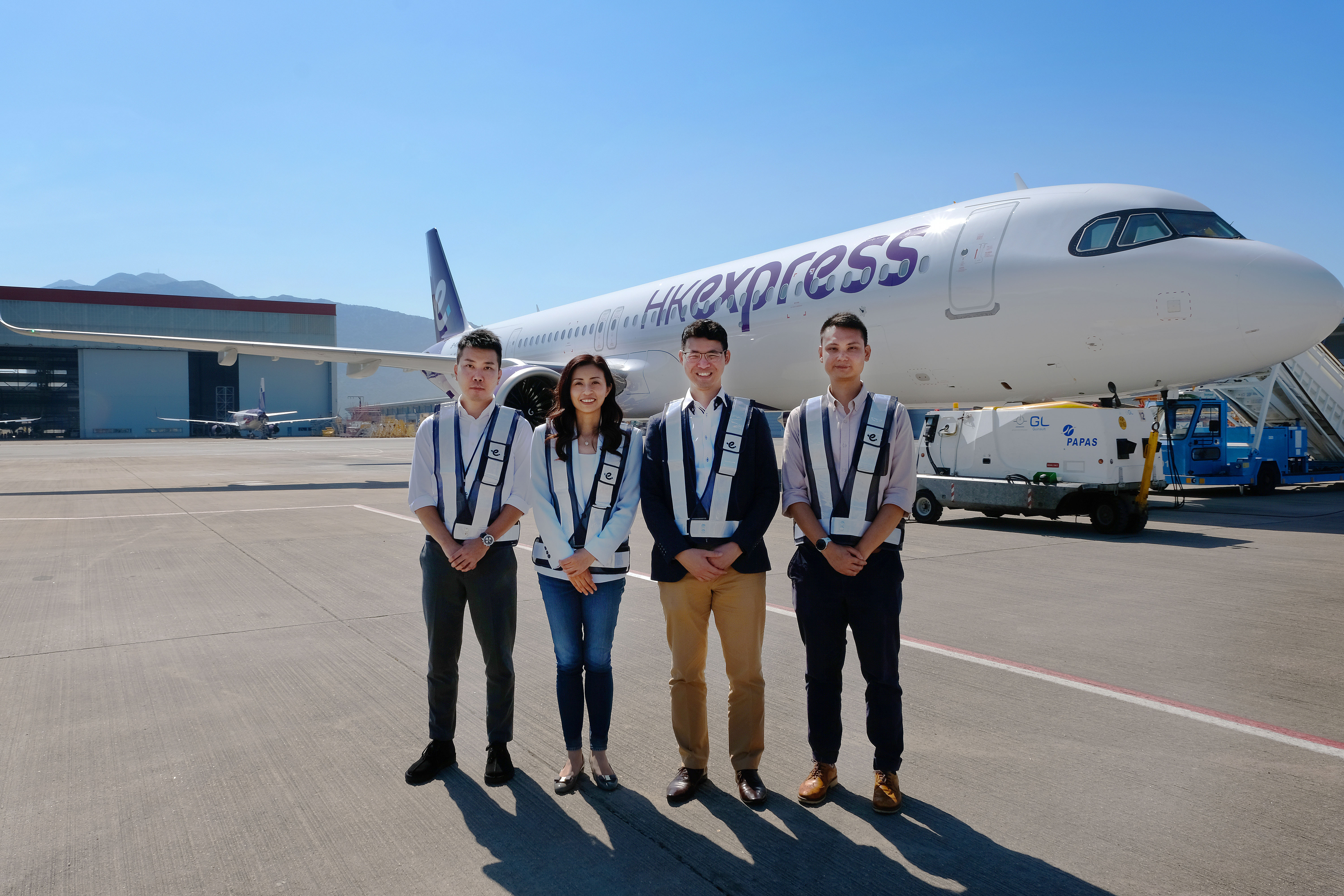
HK Express CEO Jeanette Mao (second from left), HK Express Maintenance & Engineering Director Geoffrey Hung (second from right) and HK Express Maintenance & Engineering - Technical Service Engineers, Kim Leung and Duncan Chiu (first from left and first from right) welcomed the 10th Airbus A321neo aircraft on the tarmac.
HK Express Airways (HK Express) is pleased to announce the arrival of its 10th Airbus A321neo aircraft (Registration: B-KKJ). The A321neo is the largest passenger aircraft in HK Express' fleet, enabling us to accommodate more travellers and bring them to our 31 destinations across Asia!
The engineering and pilot teams from HK Express have recently visited the Airbus Delivery Center in Toulouse, France for a four-day inspection and test flight of the aircraft. Upon its arrival in Hong Kong, a rigorous series of maintenance checks and inspections was carried out prior to service commencement, ensuring that the aircraft meets our high standards of safety and performance. The aircraft has entered service on 9 November.
Jeanette Mao, Chief Executive Officer, HK Express said: "As HK Express continues to introduce new routes, we are thrilled to welcome our 10th Airbus A321neo aircraft, marking a significant step towards the goal of growing our fleet to 40 aircraft. Since receiving our first A321neo aircraft in March last year, we have added 10 A321neo aircraft in just over a year and a half. With the rapid expansion of our fleet and the launches of new routes, HK Express will increase its weekly flights to over 800."
HK Express now flies an average of over 15,000 passengers arriving and departing the Hong Kong International Airport daily. This contributes to the development of the city’s tourism industry, facilitating more frequent travels between Hong Kong and other Asian countries while creating new business opportunities.
"HK Express is confident in the Asian market, especially with the commissioning of the Three-runway System,” Mao added. “We look forward to the new opportunities it will bring. We will continue to expand our fleet, introduce new routes, and enhance our Asian flight network, providing more affordable and reliable flight options while reinforcing Hong Kong's position as the region’s leading international aviation hub."
With the largest fuselage in the HK Express’ fleet, the A321neo can accommodate 236 passengers. The 18-inch-wide cabin seats are designed to offer a wider aisle and plenty of overhead storage space to ease the boarding and disembarking procedures. The new aircraft also aligns with our goal of becoming a more sustainable airline while remaining committed to its low-cost carrier business model. The A321neo, which incorporated the latest LEAP-1A engines, provides a maximum take-off thrust of 32,000 pounds, along with its aerodynamic advancement, offering a reduction in fuel consumption of up to 20% per seat compared to the previous generation of engines.
HK Express currently has a fleet of 39 aircraft, including six Airbus A320ceo, 10 A320neo, 13 A321ceo and 10 A321neo. The average age of the fleet is 7.3 years.
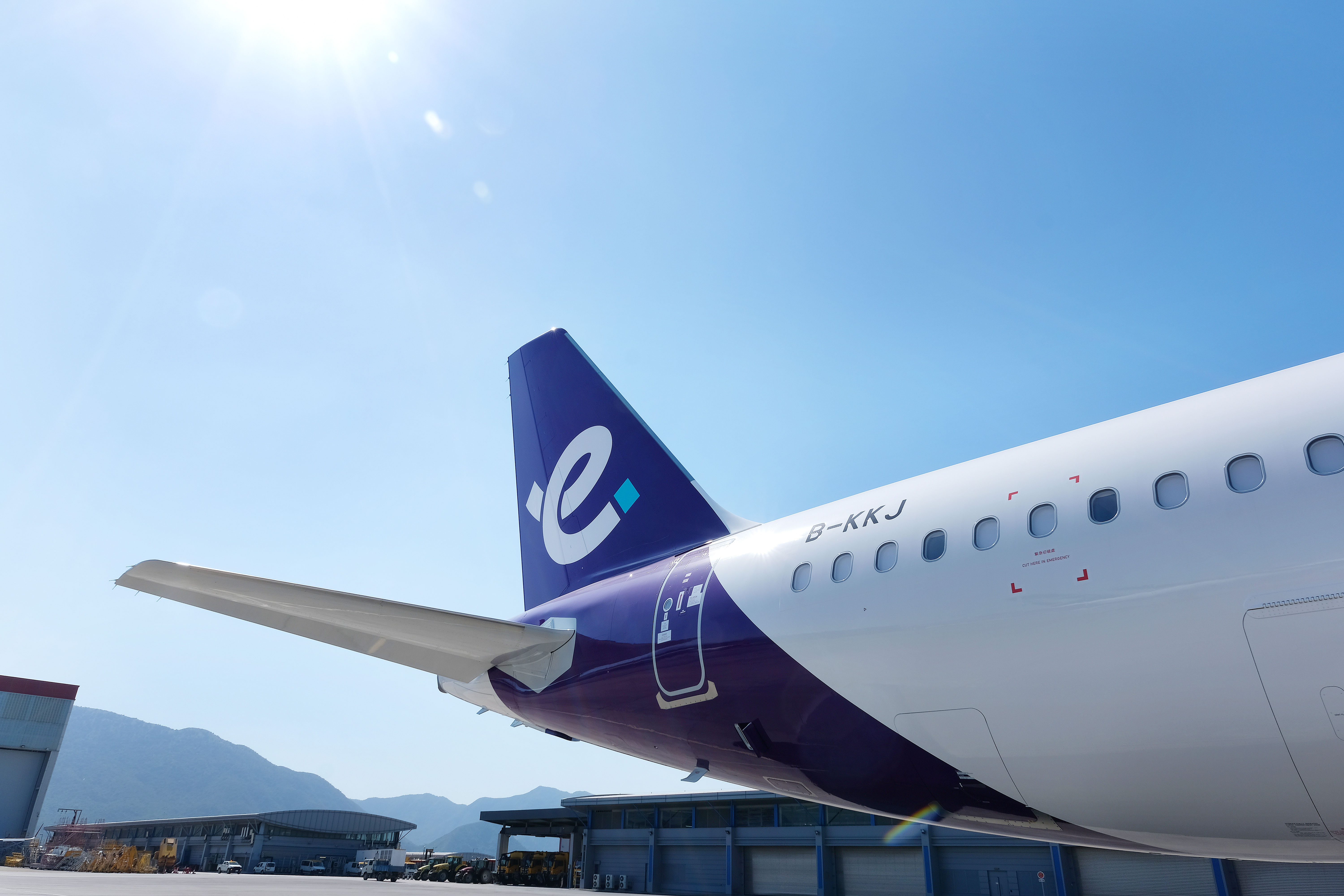
HK Express’ 10th Airbus A321neo aircraft (Registration: B-KKJ)
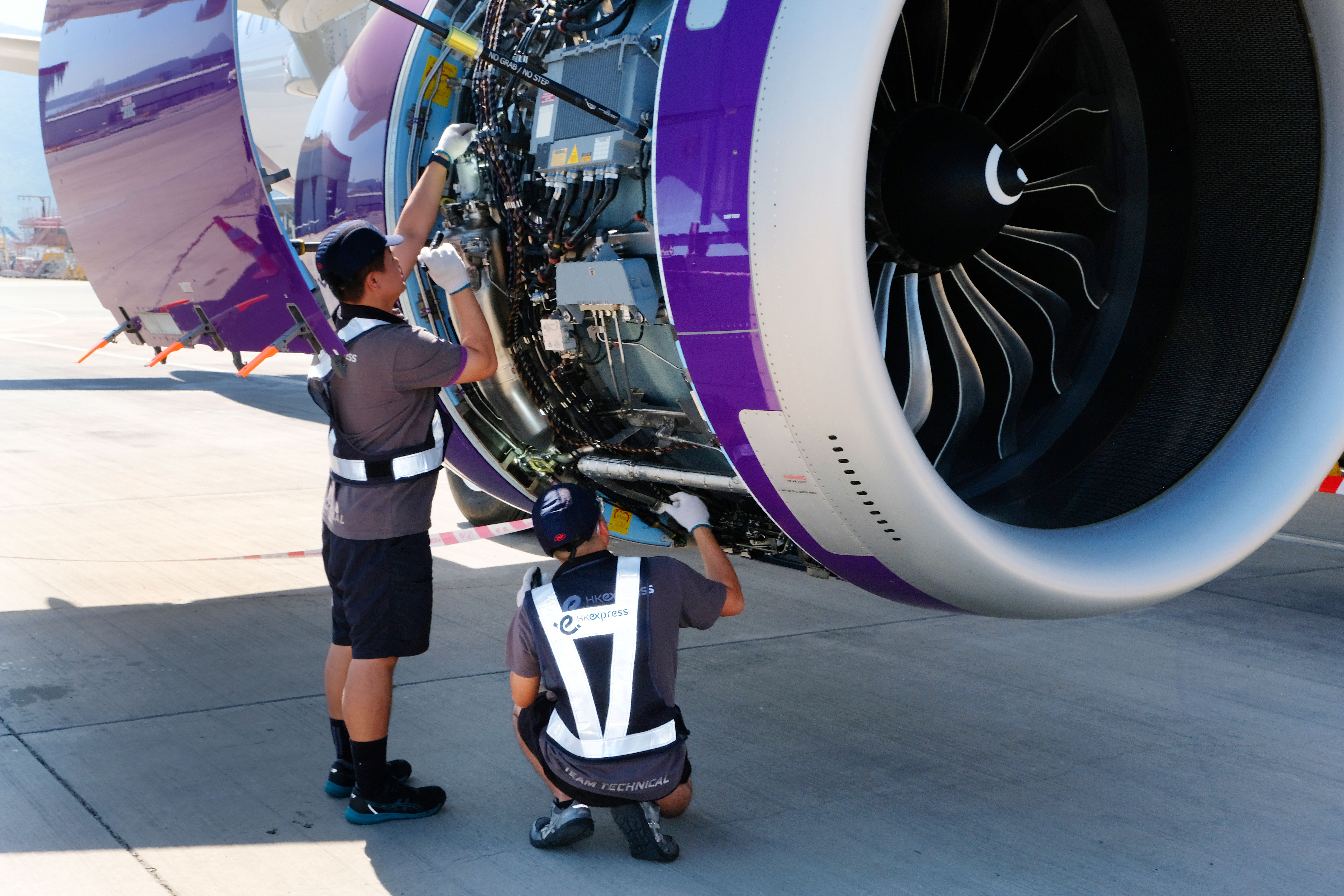
HK Express mechanics inspect the engine of the 10th A321neo on the tarmac, making final examinations before service begins
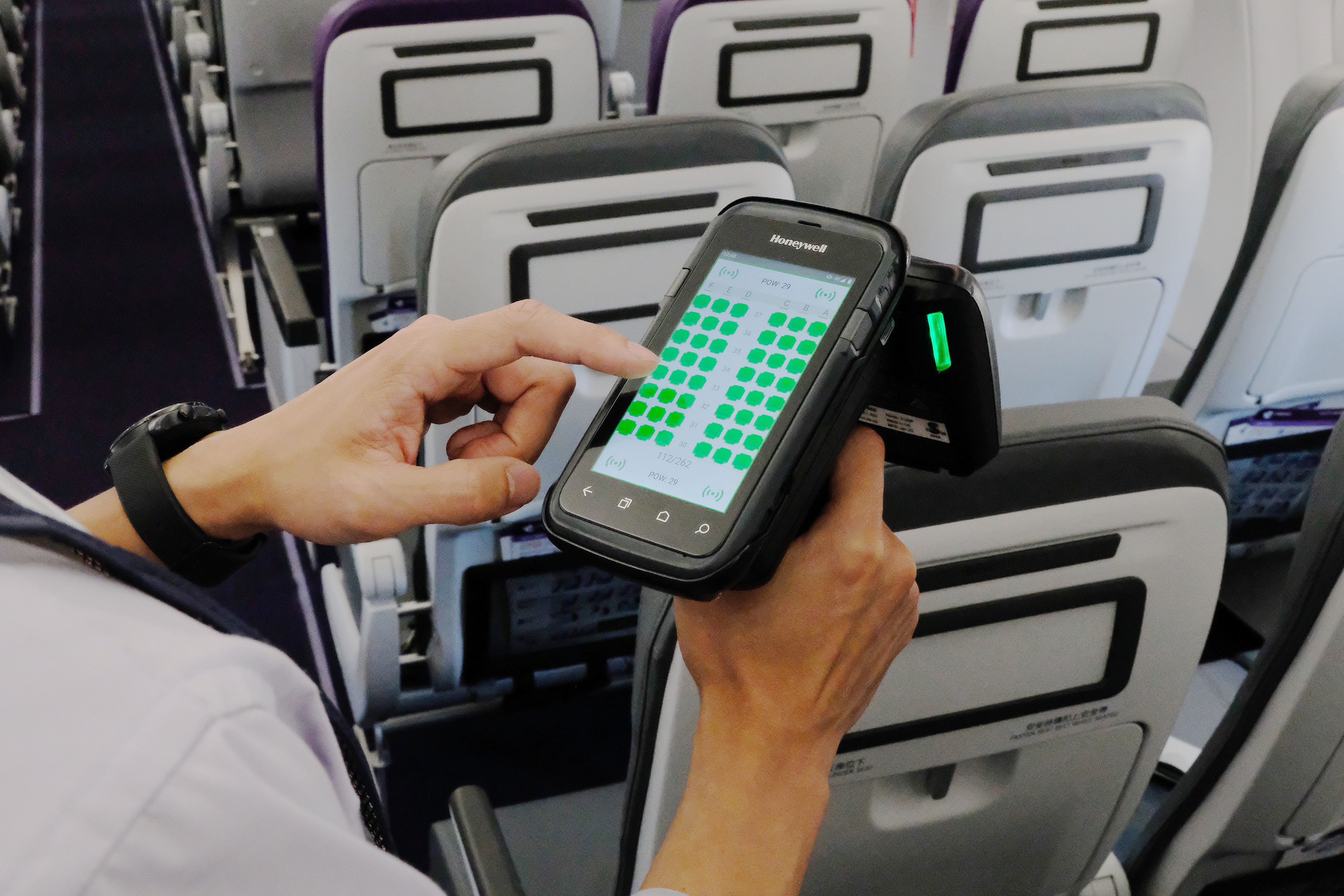
HK Express’ engineer uses radio frequency identification (RFID) equipment to scan the entire aircraft and check the safety equipment in the cabin
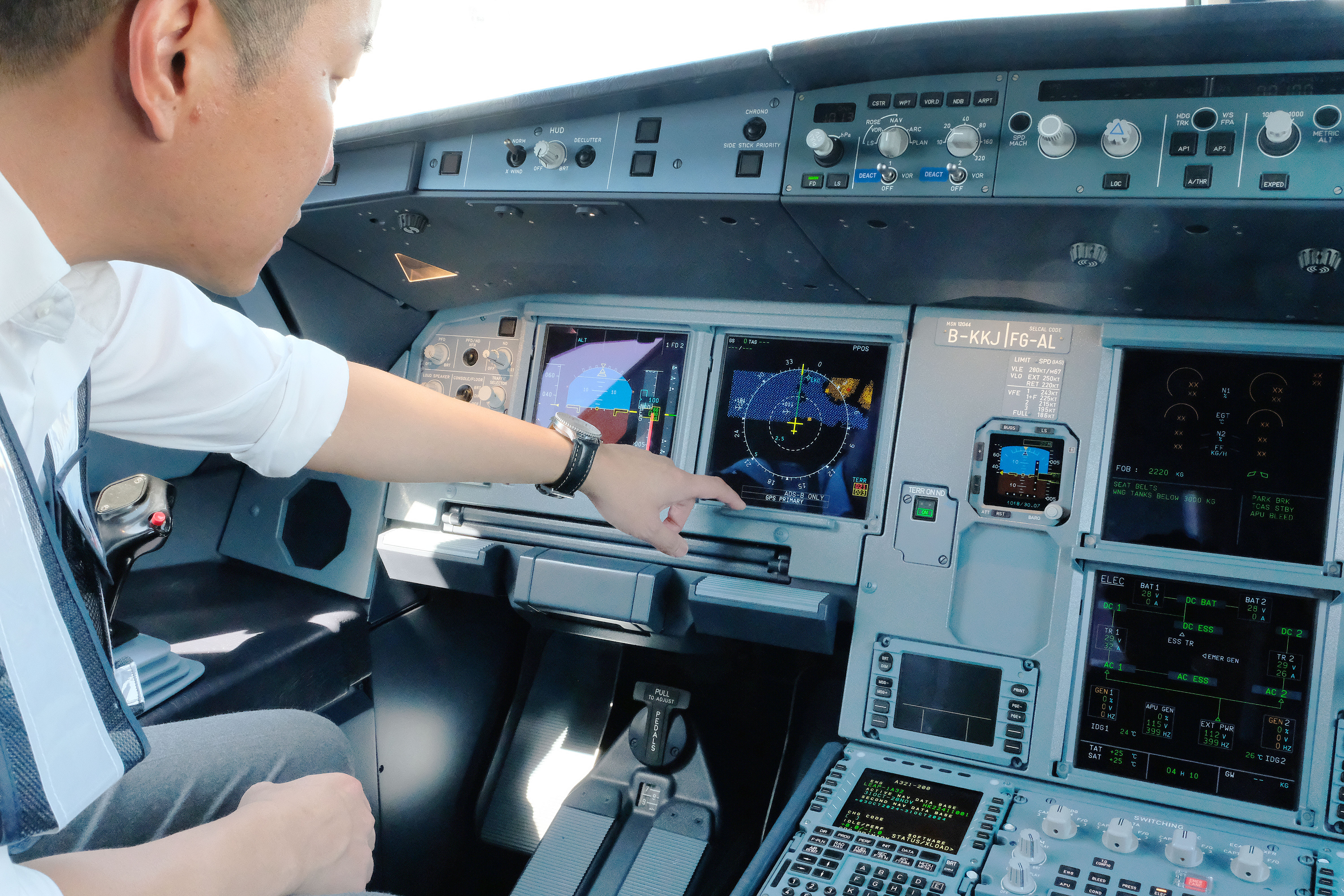
HK Express’ engineer checks the navigation systems in the cockpit to ensure proper operation
